Cosmonautics 2018 - year results

2018 is coming to an end and I think we can sum up. In 2018 there were many successes and joyful moments: Insight landing on Mars, convergence of the Hayabus-2 and OSIRIS-Rex probes with asteroids, the TESS planetary telescope began its work, the Parker Solar Probe reached the sun, and Falcon Heavy and Electron successfully launched. But there were sad moments: a hole in the Union MS-09 and the subsequent scandal. Accident of Union MS-10. In general, in 2018 112 launches were made, of which 38 - China, 34 - the United States, 19 - Russia, 8 - Europe, 7 - India and 6 - Japan.
Study of the planets
Insight
On May 5, ULA launched the previously canceled InSight research mission on the Altas V rocket to study the internal structure and composition of the red planet. A successful landing took place on November 26, 2018. The probe straightened the solar panels and sent its first selfie.
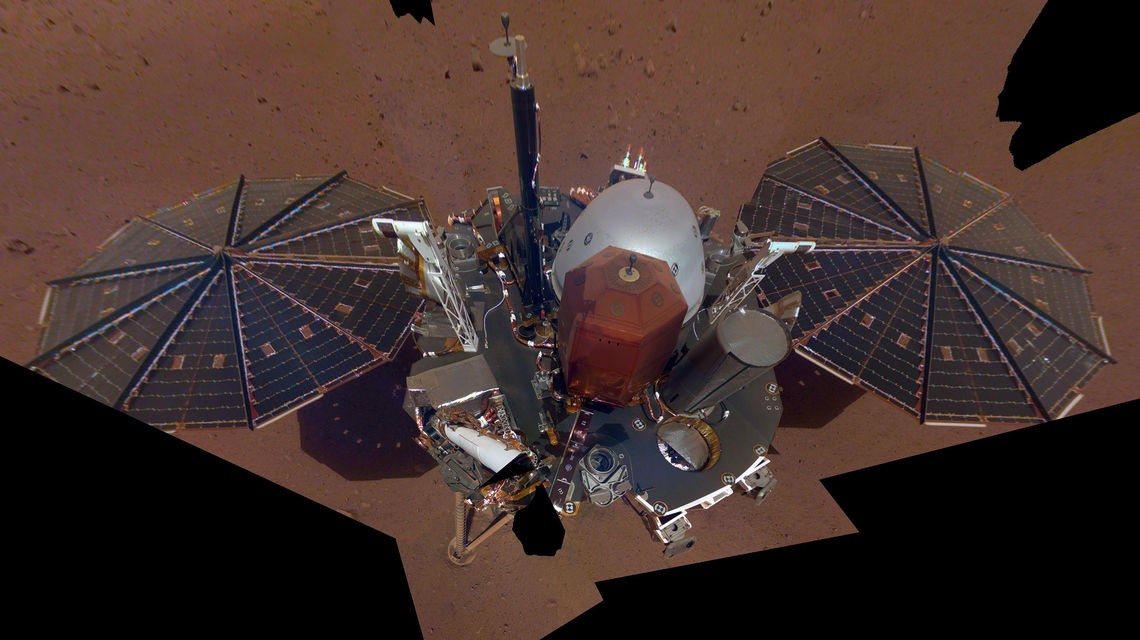
Insight is built in the Jet Propulsion Laboratory (JPL) on the basis of the already proven design of the Phoenix landing probe . The probe is equipped with two cameras, a seismometer and a drill with the ability to dive to a depth of 6 m.
In the following video, you can hear the Martian wind recorded with a seismometer:
Even before the arrival of Insight, a global dust storm raged on Mars that covered the Opportunity rover . Opportunity solar panels are its only power source. The rover for six months does not get in touch and the chances of success are not great.
The rover Curiosity also registered a dust storm, but it does not depend on solar panels. Curiosity has another problem - back in 2016, the drill broke. The scientific team decided to use the engines of the rover manipulator for drilling and in the summer of 2018 Curiosity conducted the first drilling operations in two years.
European Mars Express has been working in Mars orbit for 15 years. In October 2018, Mars Express watched the train over the super volcano of Mount Arcia. The train was similar to a volcanic eruption and stretched for 1500 km.
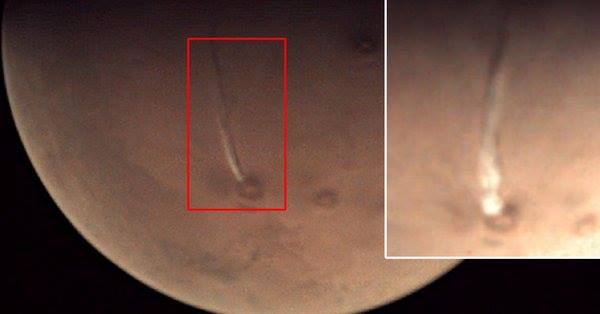
And in December, a photograph of a frozen lake was published in the Korolev crater. The crater is 82 kilometers long in winter and is filled with ice up to 1.8 km thick.
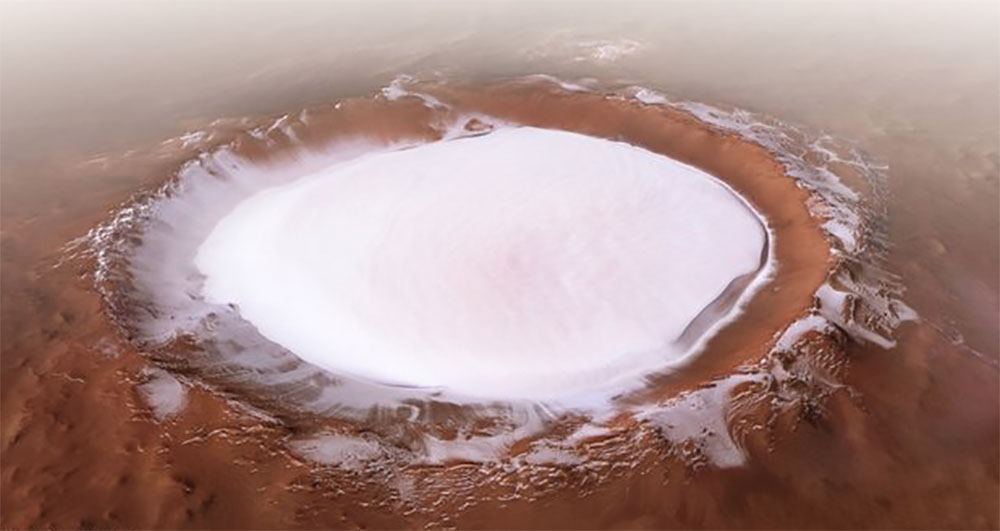
ExoMars: TGO
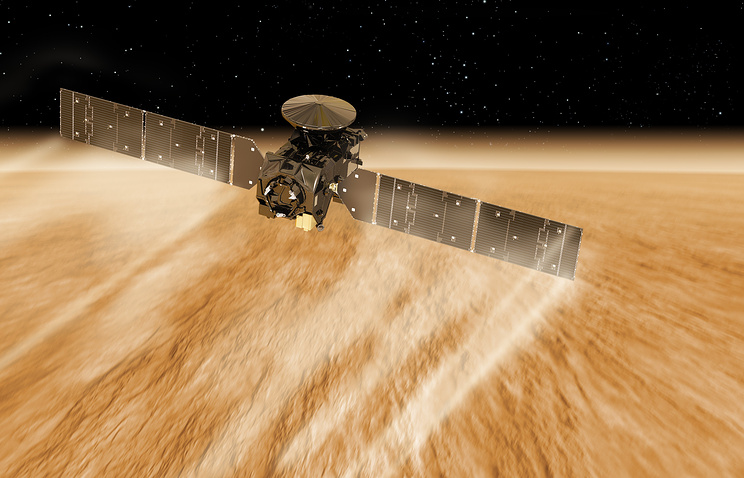
Since 2016, the TGO (Trace Gas Orbiter) orbital module of the Russian-European mission ExoMars gradually braked the atmosphere of Mars and began research in the spring of 2018. The device explores the nature of the formation of methane, other gases and water vapor in the atmosphere of Mars. Also TGO will perform the functions of a repeater with the future rover Exomars 2020 .
The first results puzzled scientists and testify to the absence of methane in the atmosphere of Mars. In the past, data from the Curiosity rover indicated the presence of methane on the red planet.
Chang'e-4

The goal of Chang'e-4 (duplication of the mission of Chang'e-3) is the first landing in history on the reverse side of the moon. To provide communication with the Chang'e-4 landing module, the orbital module was launched to the L2 point L2 in July 2018 . The landing of the Chang'e-4 was launched on December 7, and we are waiting for landing at the beginning of 2019.
Parker solar probe
August 11, 2018 on the heavy rocket Delta IV Heavy launched the Parker Solar Probe - a space probe to study the solar corona from an orbit of 8.5 solar radii in height. The probe is equipped with a hexagonal shield behind which all instruments and solar panels are hidden.

They are going to study magnetic fields, formation, acceleration of particles of the solar wind and the level of energy emitted by the solar corona. On December 19, 2024, the probe will have to reach the orbit of the Sun, for which it will perform 7 gravitational maneuvers near Venus.
On November 8, the device took the first photograph from the solar atmosphere, being at a distance of 16.9 million kilometers from the surface of the sun.
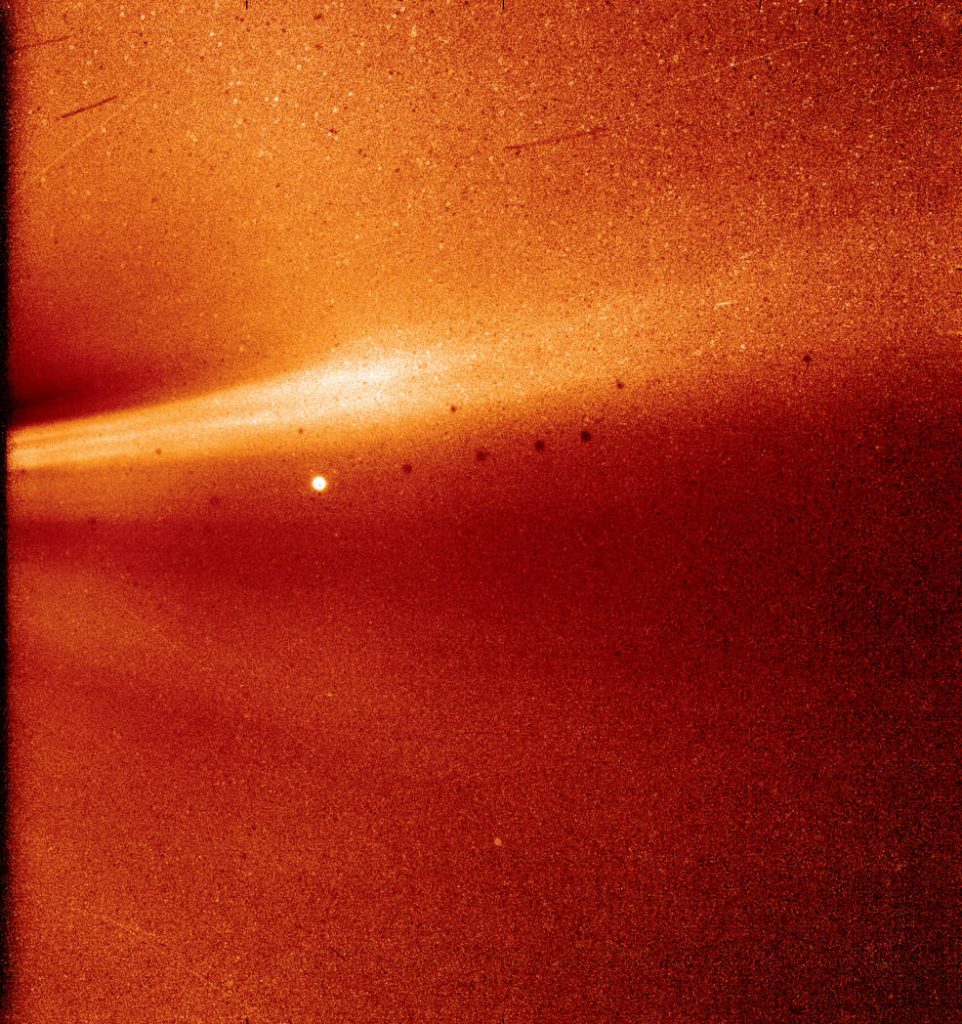
Mercury Magnetospheric Orbiter
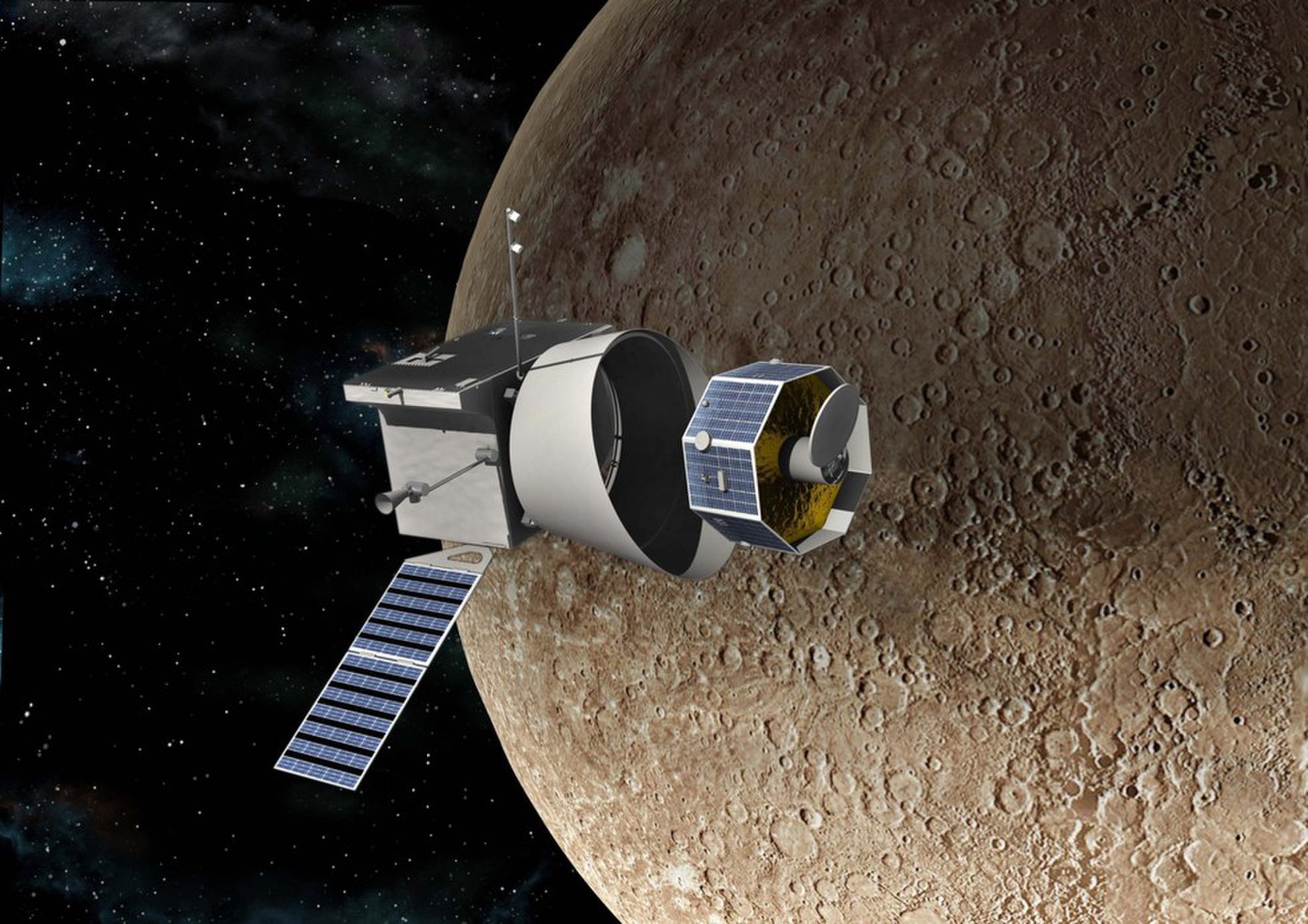
A joint project of the European ESA and the Japanese JAXA for the study of Mercury consists of two satellites, with different orbits. The launch was made on October 20, 2018 on the European launch vehicle Ariane-5.
Arrivals are scheduled for December 2025. To save fuel, 17 gravitational maneuvers will be performed around the Earth, Venus and Mercury. European Mercury Planetary Orbiter will study the surface and the internal structure of Mercury. The Japanese Mercury Magnetospheric Orbiter will explore the magnetic field and Mercury's magnetosphere.
Kepler
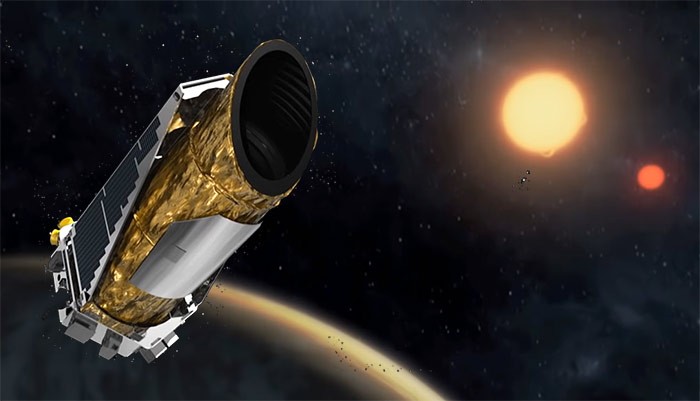
The Kepler space telescope was completed in November 2018. The launch took place on March 6, 2009. During its operation, the telescope discovered 2.681 planets outside the solar system. In April 2016, problems were discovered, and then the fuel ran out. October 30, NASA announced the completion of the mission.
Tess
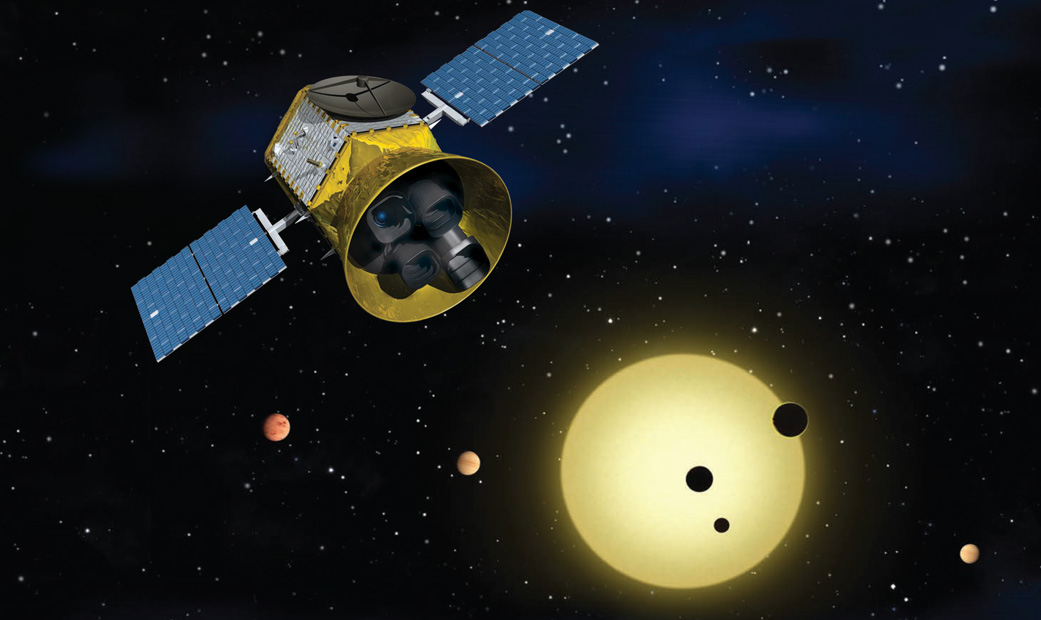
The TESS (Transiting Exoplanet Survey Satellite) Planet Hunter telescope was launched on April 18, 2018 to replace Kepler and will conduct research to investigate open and detect previously unknown, transit exoplanets around bright stars. The data obtained by the TESS telescope will be used for further, more detailed studies by other telescopes in the future.
Chandrayaan 2
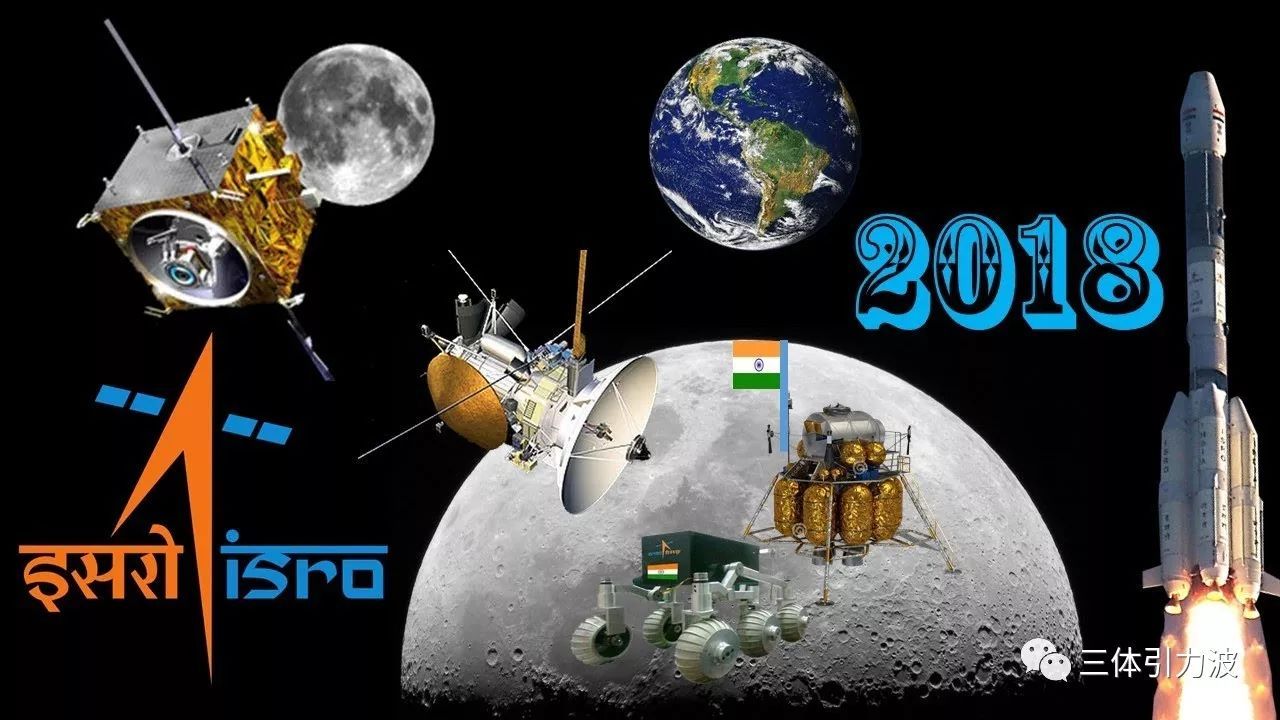
The launch of the second Indian lunar mission, scheduled for March 2018, was postponed to January 30, 2019. The mission will consist of an orbital and landing craft and even a small lunar rover. To achieve the lunar orbit, complex and lengthy maneuvers will be conducted. The first Indian lunar rover will weigh only 20 kg. and must work one lunar day.
Google Lunar Xprize
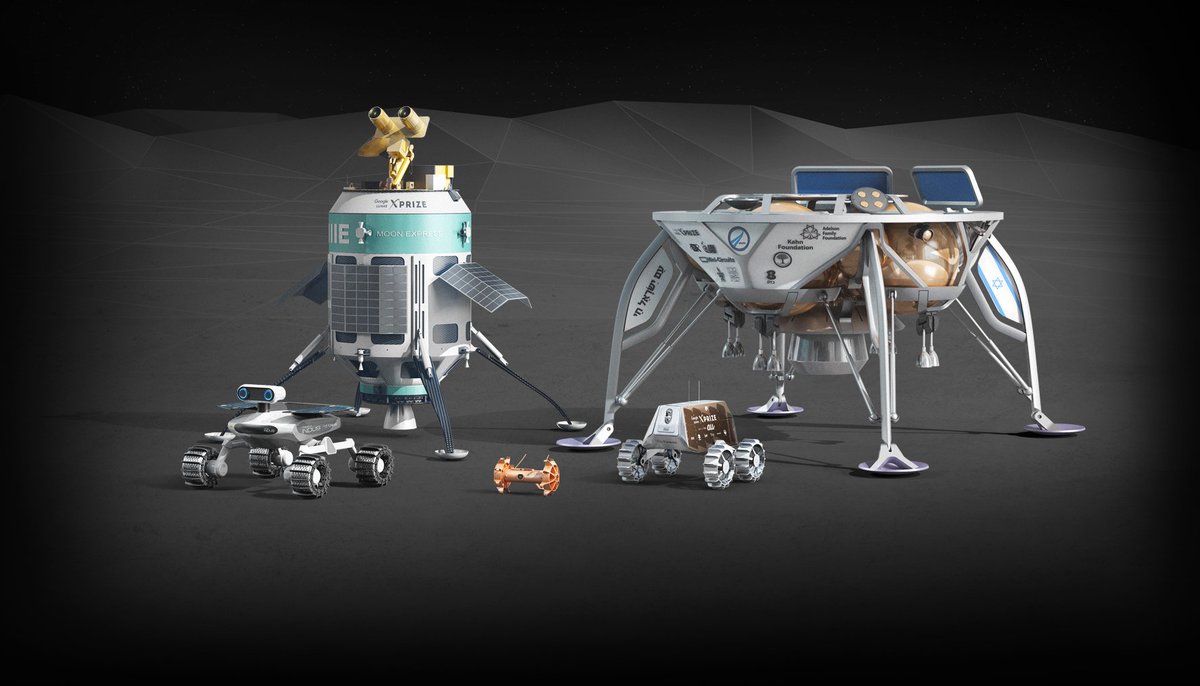
The Google Lunar Xprize contest ended without a winner, but most teams plan to continue. So the Israeli SpaceIL will launch its lunar module (as an additional load) on the Falcon 9 already in February 2019. And the American team Moon Express plans to hold two launches on the Electron rocket in 2019 at once.
Asteroids
OSIRIS-REx
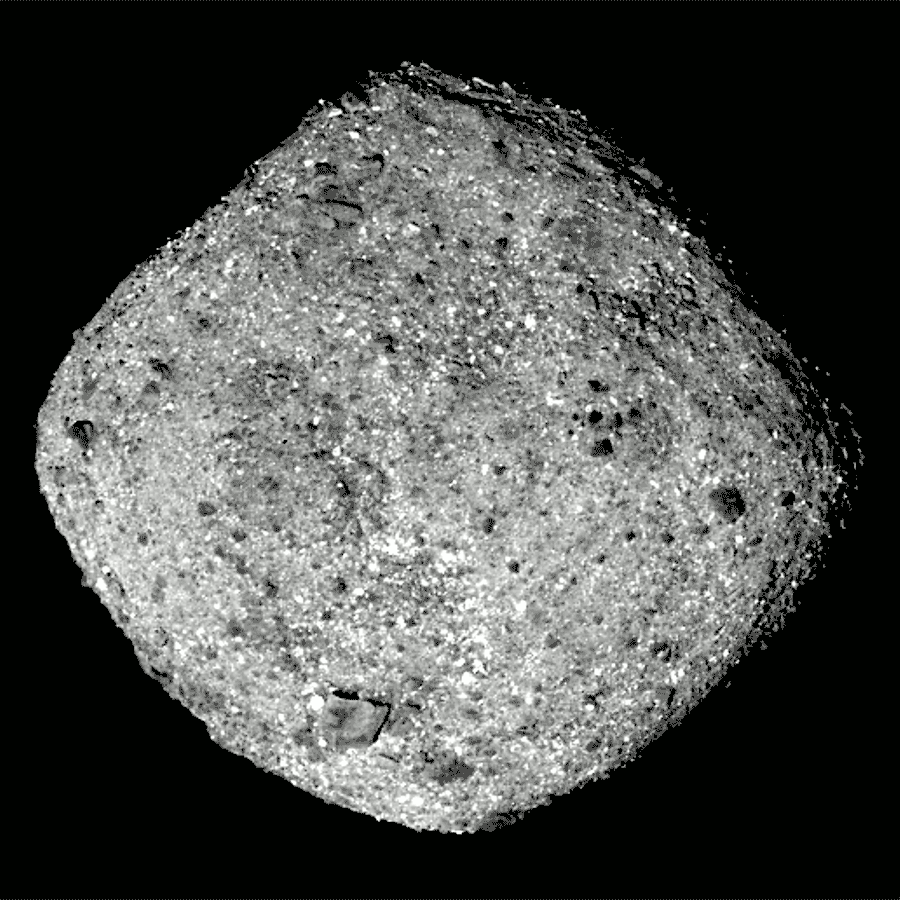
In December, the interplanetary station OSIRIS-REx arrived at the Benn asteroid . After approaching, the apparatus began to map the asteroid and measure the change in its orbit depending on the heating by the Sun. The results of the mapping will be used to select the ground collection site, the collection will take place in 2019, and return to Earth in 2023.
Hayabusa-2
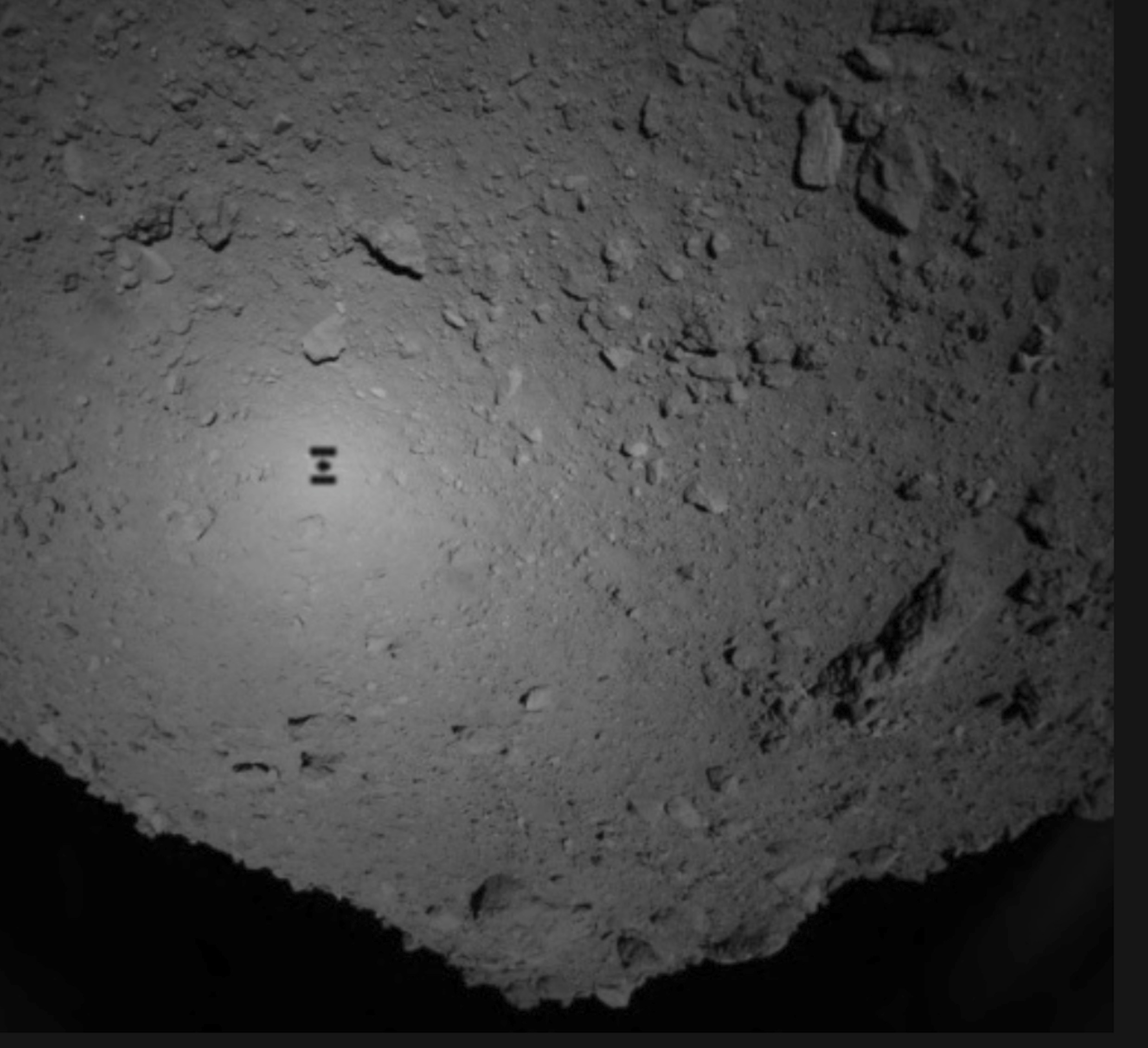
The Japanese Hayabusa-2 arrived in July at the asteroid (162173) Ryugu . Two modules of MINERVA-II1, which can bounce to move, were already landed. They transmitted the first photos from the surface.
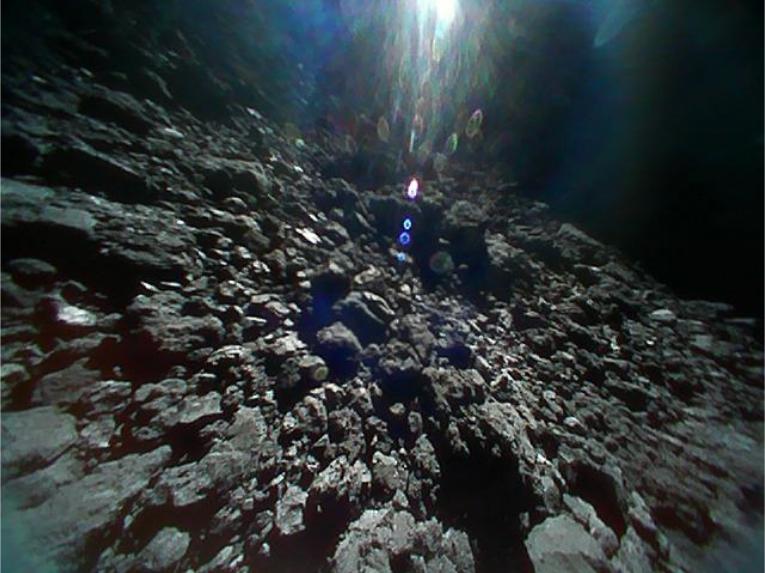
MASCOT, a small, European-made descent vehicle, will descend for a more detailed survey. Like OSIRIS-REx, Hayabusa-2 will have to deliver a sample of rocks from the surface of the asteroid to Earth.
Dawn
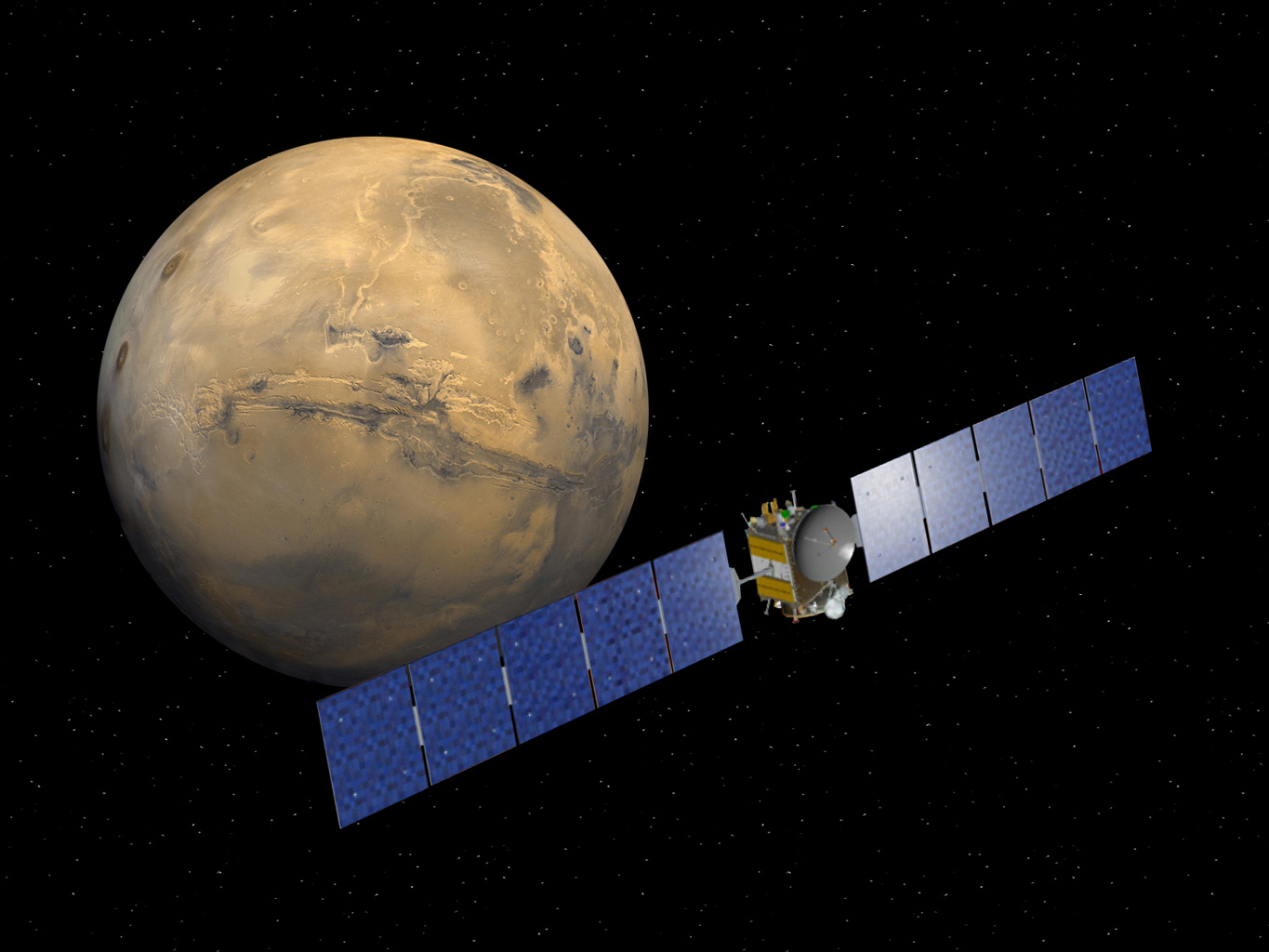
The mission of the Dawn probe ended in November 2018, when its fuel reserves finally dried up. The probe is buried in the Ceres orbit to avoid contamination of the Ceres surface with terrestrial materials. The probe was launched in 2007 and explored the asteroid Vesta and the dwarf planet Ceres .
The last photograph of Ceres was taken in September 2018:
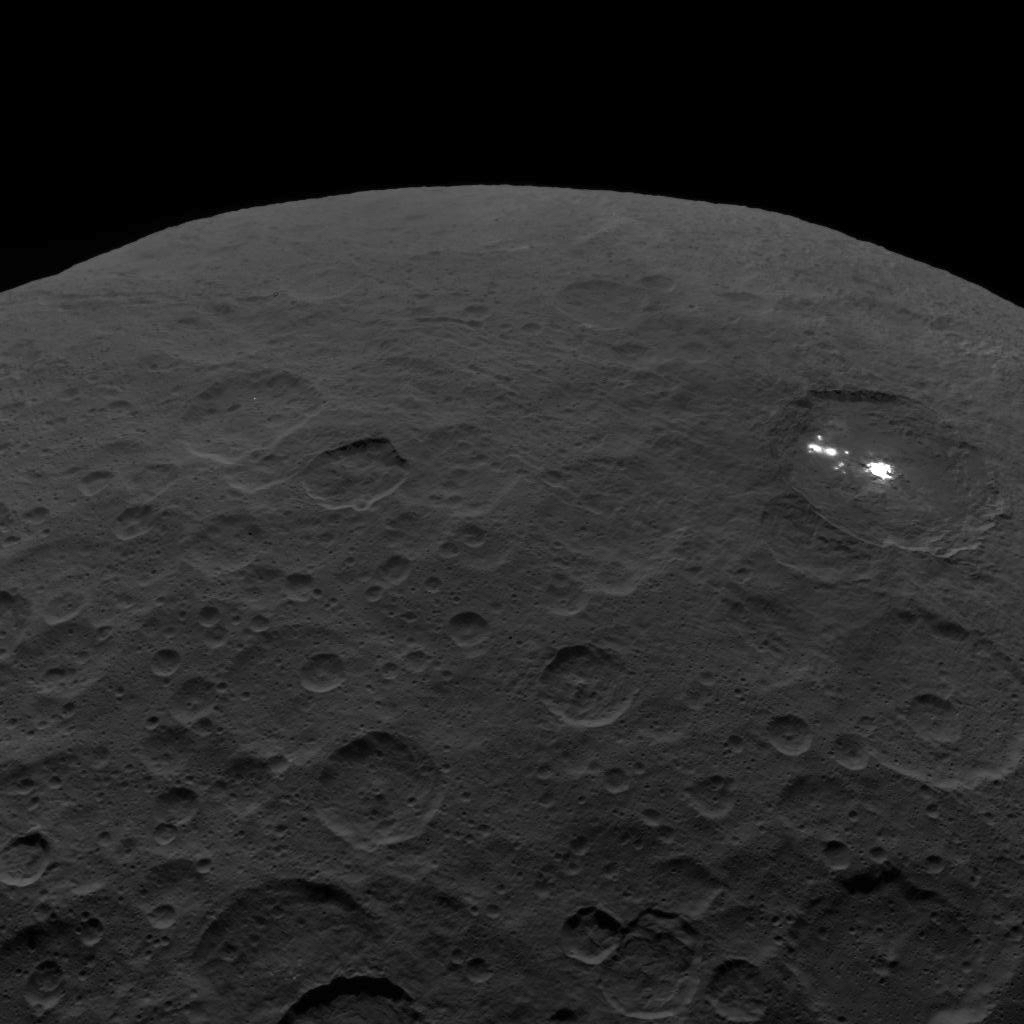
New horizons
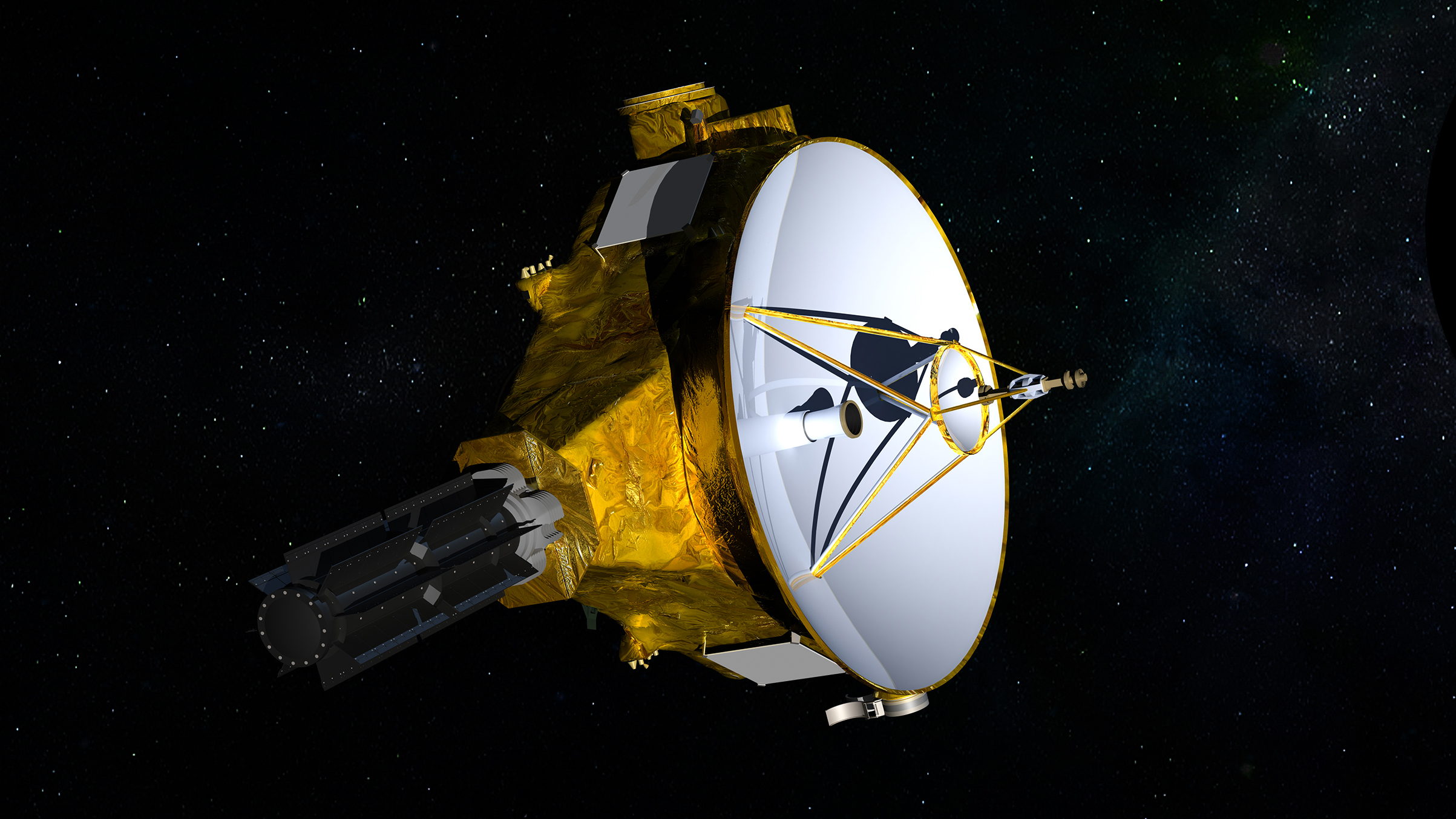
Launched in 2006, the New Horizons research station, located in the Kuiper belt, in June 2018 went out of hibernation and began to approach the asteroid Ultima Thule , and the station will reach its minimum distance in January 1, 2019. Asteroid Ultima Thule will be the most distant object in the solar system, which will visit the spacecraft created by humans.
On December 2, 2018, the station took the first photo of the asteroid:
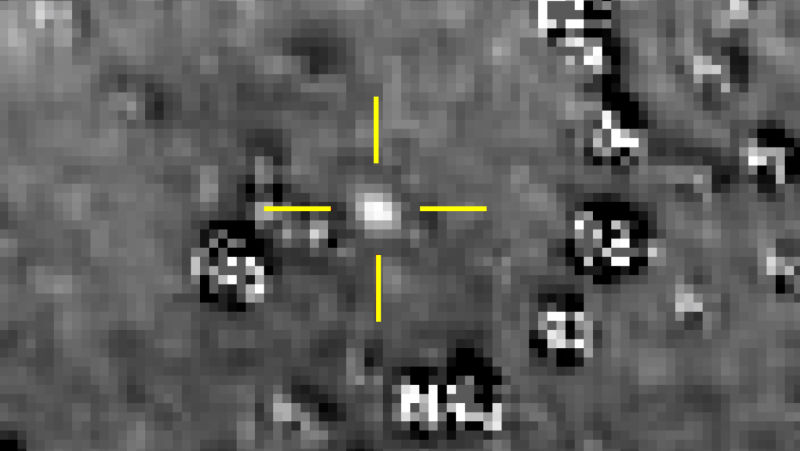
Private Astronautics
Spacex

Probably one of the most spectacular events in astronautics in 2018 can be considered the test launch of the Falcon Heavy on February 6, 2018. Early SpaceX planned in 2018m to plant Red Dragon on the red planet. Instead of Red Dragon SpaceX launched Tesla Roadster on the trajectory of the passage past the orbit of Mars. The Falcon Heavy side boosters synchronously landed, but the central unit did not survive when attempting to board the floating platform.
The show was a success and in 2019 two commercial launches are already scheduled.
The recent landing of the first stage of the Falcon 9 also looked spectacular in the mission for the withdrawal of the unmanned ship of the Dragon supply to the ISS.
Workhorse SpaceX - Falcon 9 brought up to the version of Block 5. This is the final version of the rocket, no big changes in the future are planned. One such stage already flew 3 times into space. In November, Falcon 9 was certified for the launch into space of the most expensive and priority NASA missi.
Rocket lab
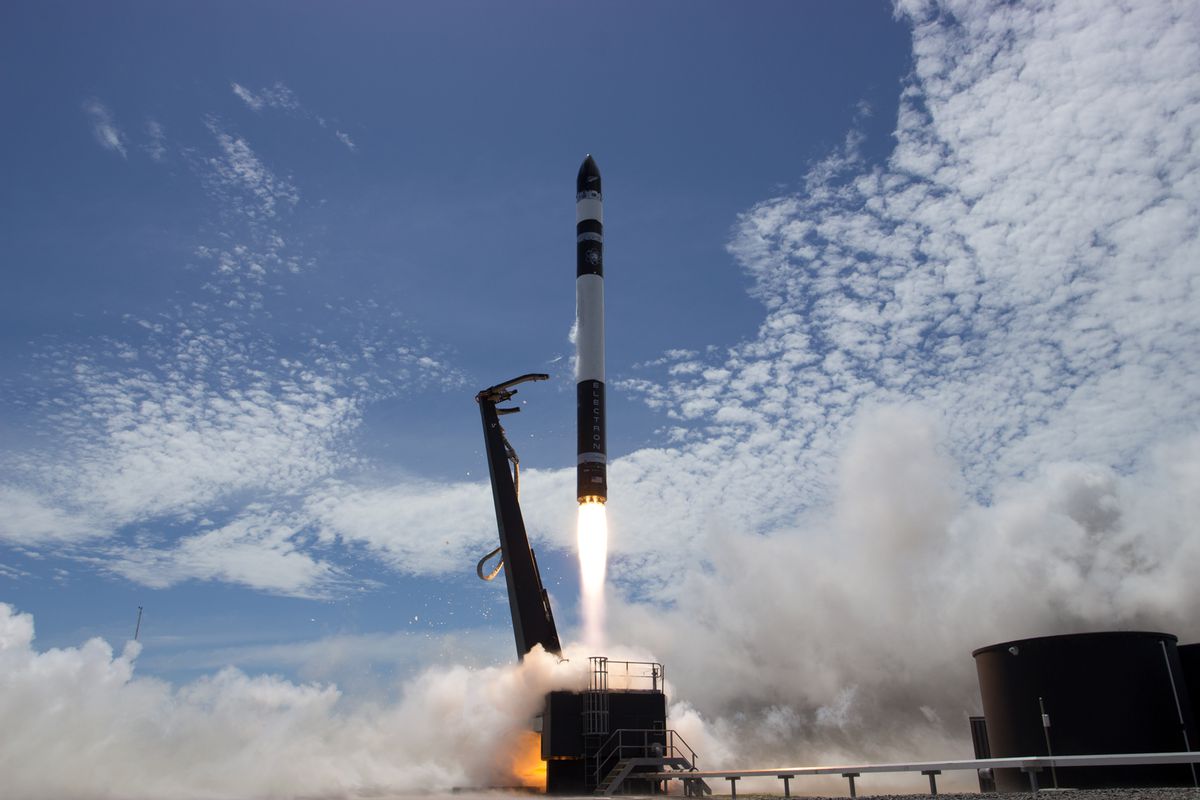
After a setback last year, Roket Lab produced two successful launches of its ultra-light Electron rocket in 2018. The rocket is designed to launch micro-and nanosatellites and is made of composite materials.
Virgin galactic
Virgin Galactic began a series of test flights, the last of which reached an altitude of 82 km, which is above the 50-mile mark adopted by the US Air Force as a conditional boundary of outer space.
Blue origin
At the end of 2018, Blue Origin had already planned to make the first flight of the New Shepard suborbital rocket system with people on board. But the matter was limited to a series of unmanned tests, in one of which the rocket reached an altitude of 107 km, and in the other the crew’s emergency rescue system was tested.
Landspace
On October 27, the Chinese company LandSpace launched its first Zhuque-1 rocket, but the payload did not reach orbit due to a malfunction in the third stage.
Piloted astronautics
Accident of the Union MS-10
October 11, 2018 Union MS-10 launched from the Baikonur cosmodrome on the ISS. At an altitude of about 50 km, an accident of a launch vehicle occurred, after which the emergency rescue system was activated. Fortunately, the astronauts were not injured. The investigation commission found that an error was made in the process of assembling the launch vehicle at Baikonur cosmodrome.
Hole on the Union MS-09
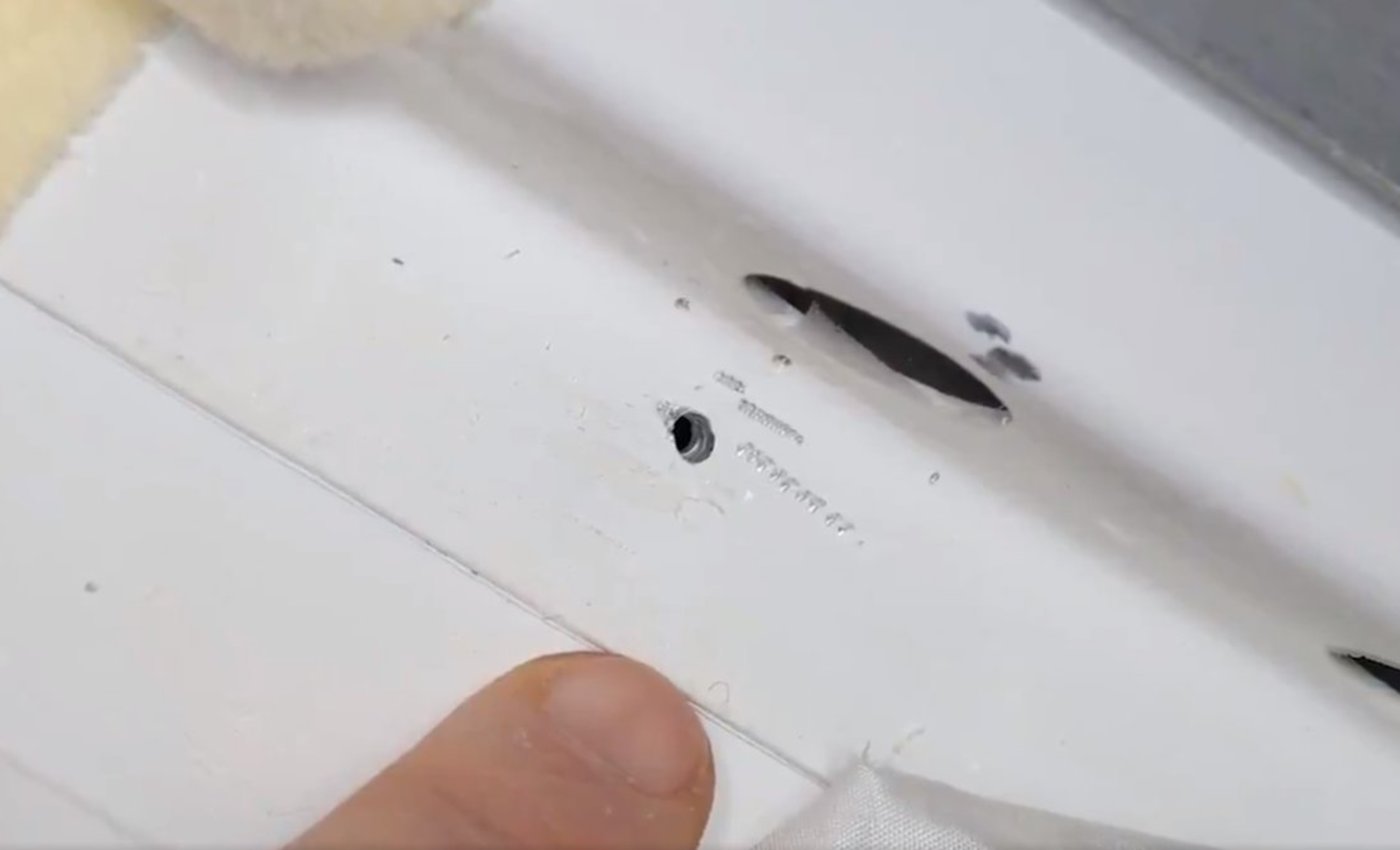
On August 30, 2018, a drop in air pressure was recorded on the ISS. A hole was found in the household compartment of the Soyuz MS-09 manned spacecraft. The astronauts promptly sealed the damage. To investigate the origin of the hole, samples were taken from the inner and outer surfaces of the spacecraft, for which cosmonauts Oleg Kononenko and Sergey Prokopyev took place on December 11, 2018.
MLM Science

The launch of the 24-ton Russian multifunctional laboratory module " Science " was postponed to the end of 2019.
Dragon V2 and CST-100 Starliner
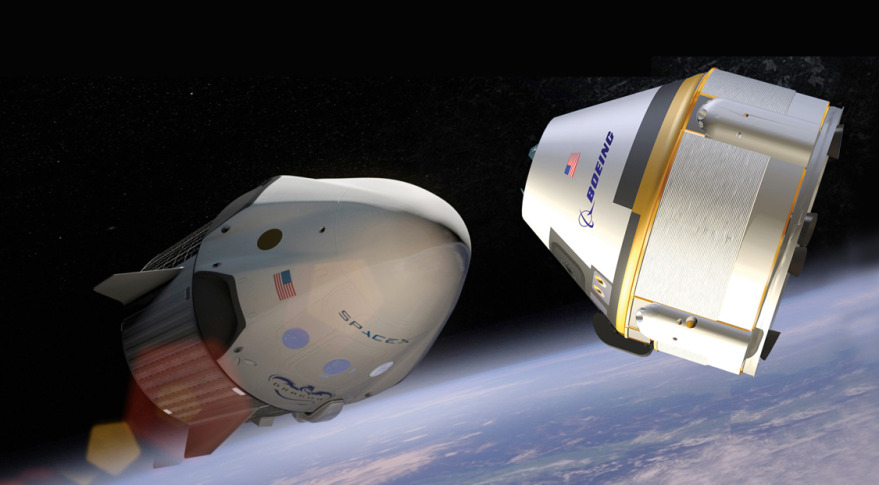
In 2014, SpaceX and Boeing became the two winners in the competition for the delivery of astronauts to the ISS and their return to earth. And in 2018 the first flights with people were to take place, but they were again transferred. Now, the Dragon V2 will fly in an unmanned version to the MKS in January and manned in June, and the Starliner, respectively, in March and August 2019.
